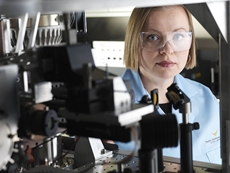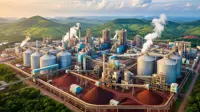Airborne particles smuggle pollutants to far reaches of globe
21 Nov 2012
Pollution from fossil fuel burning and forest fires reaches all the way to the Arctic, even though it should decay long before it travels that far. Now, lab research can explain how pollution makes its lofty journey - rather than ride on the surface of airborne particles, pollutants snuggle inside, protected from the elements on the way. The results will help scientists improve atmospheric air-quality and pollution transport models.
 |
| Alla Zelenyuk developed SPLAT II, which allows scientists to characterize millions of tiny particles one by one. SPLAT II provided the data needed to determine what's happening to the airborne particles over their lifetimes. |
The results also show that the particles that envelop pollutants also benefit from this arrangement. The new study in Environmental Science & Technology shows that the airborne particles, made from natural molecules mostly given off by live or burning plants, last longer with a touch of pollutant packed inside.
The pollutants are known as polycyclic aromatic hydrocarbons, or PAHs, and are regulated by environmental agencies due to their toxicity.
"What we've learned through fundamental studies on model systems in the lab has very important implications for long-range transport of pollutants in the real world," said physical chemist Alla Zelenyuk of the Department of Energy's Pacific Northwest National Laboratory. "In this study, we propose a new explanation for how PAHs get transported so far, by demonstrating that airborne particles become a protective vessel for PAH transport."
Floating in the air and invisible to the eye, airborne particles known as secondary organic aerosols live and die. Born from carbon-based molecules given off by trees, vegetation, and fossil fuel burning, these airborne SOA particles travel the currents and contribute to cloud formation. Along for the ride are pollutants, the PAHs, that have long been thought to coat the particles on their surface.
For decades, atmospheric scientists have been trying to explain how atmospheric particles manage to transport harmful pollutants to pristine environments thousands of miles away from their starting point. The particles collected in areas such as the Arctic also pack higher concentrations of pollutants than scientists' computer models predict.






.webp)















